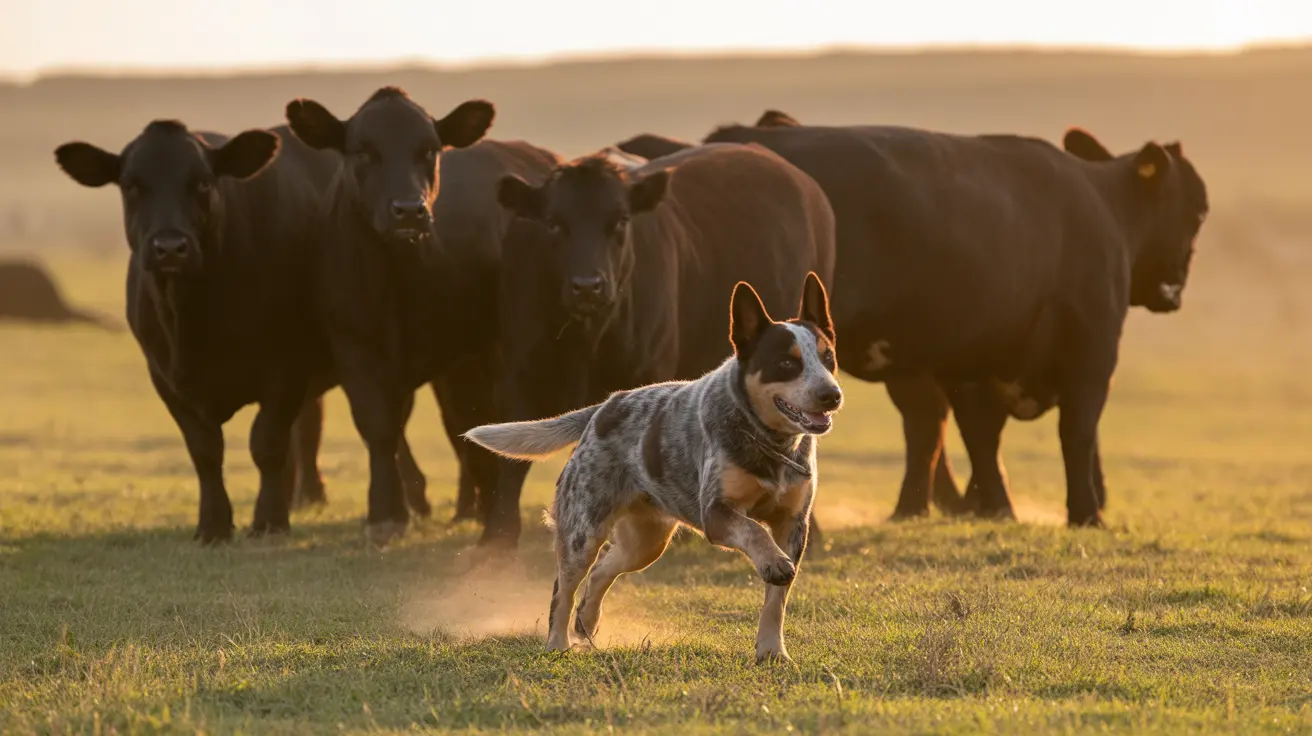Understanding Cattle Dog Breeds in America
Despite their various origins, many popular cattle dog breeds have been refined or developed in the United States to meet specific ranching needs. The most notable examples include the Australian Shepherd, which was actually developed in California, and the Catahoula Leopard Dog, a true American original from Louisiana.
These breeds share several common characteristics that make them exceptional working dogs:
- High intelligence and trainability
- Strong work drive and endurance
- Natural herding instincts
- Loyalty and protective nature
- High energy levels requiring regular exercise
Popular American Cattle Dog Breeds
Australian Cattle Dog (Blue/Red Heeler)
Though originally from Australia, this breed has become a cornerstone of American ranching. Known for their incredible stamina and intelligence, these dogs excel at controlling cattle through their distinctive heeling technique.
Key characteristics include:
- Weight: 35-50 pounds
- Height: 17-20 inches
- Lifespan: 12-16 years
- Colors: Blue or red speckled coat
Australian Shepherd
Despite its misleading name, this breed was developed in the western United States. They are known for their:
- Exceptional intelligence
- Strong herding instinct
- Versatile working abilities
- Striking merle coat patterns
Catahoula Leopard Dog
This uniquely American breed originated in Louisiana and is known for:
- Outstanding tracking abilities
- Independent working style
- Distinctive spotted coat
- Excellent cattle and hog herding capabilities
Training and Exercise Requirements
Cattle dog breeds require extensive physical and mental stimulation to stay healthy and well-behaved. Daily exercise should include:
- At least 1-2 hours of vigorous activity
- Mental challenges through training or puzzle toys
- Structured herding activities when possible
- Agility or other dog sports
Living with Cattle Dog Breeds
Before bringing a cattle dog into your home, consider these important factors:
- They typically need large spaces and aren't suited for apartment living
- Early socialization is crucial for managing protective instincts
- They require experienced handling and consistent training
- Regular grooming is necessary, especially during shedding seasons
Frequently Asked Questions
What are the key characteristics and traits of American cattle dog breeds like the Australian Cattle Dog and Australian Shepherd?
American cattle dog breeds are characterized by high intelligence, strong work drive, exceptional stamina, and natural herding instincts. They are typically very loyal, protective, and require substantial physical and mental stimulation to thrive.
How do Australian Cattle Dogs differ from other cattle dog breeds, and what care do they require?
Australian Cattle Dogs are distinct in their heeling style of herding and their unique blue or red speckled coat. They require intensive daily exercise, consistent training, regular grooming (especially during shedding seasons), and early socialization to manage their protective instincts.
What is the difference between heelers and headers in cattle dog herding styles?
Heelers, like the Australian Cattle Dog, control cattle by nipping at their heels to move them forward. Headers, on the other hand, control livestock by getting in front of them and using their presence to block and direct movement.
Are American cattle dog breeds suitable for families with children and apartment living?
These breeds are generally not recommended for apartment living due to their high energy levels and exercise needs. While they can be excellent family dogs with proper training, they need careful supervision around children due to their herding instincts and tendency to nip.
How should I train and socialize a cattle dog breed to manage their high energy and protective instincts?
Training should begin early with consistent, positive reinforcement methods. Focus on socialization with various people and situations, impulse control exercises, and providing structured outlets for their energy through exercise and mental stimulation. Professional training assistance is often beneficial.
When properly trained and given appropriate outlets for their energy and intelligence, American cattle dog breeds make exceptional working partners and loyal family companions. Their unique combination of intelligence, work ethic, and devotion has earned them a special place in American ranching history and contemporary family life.






